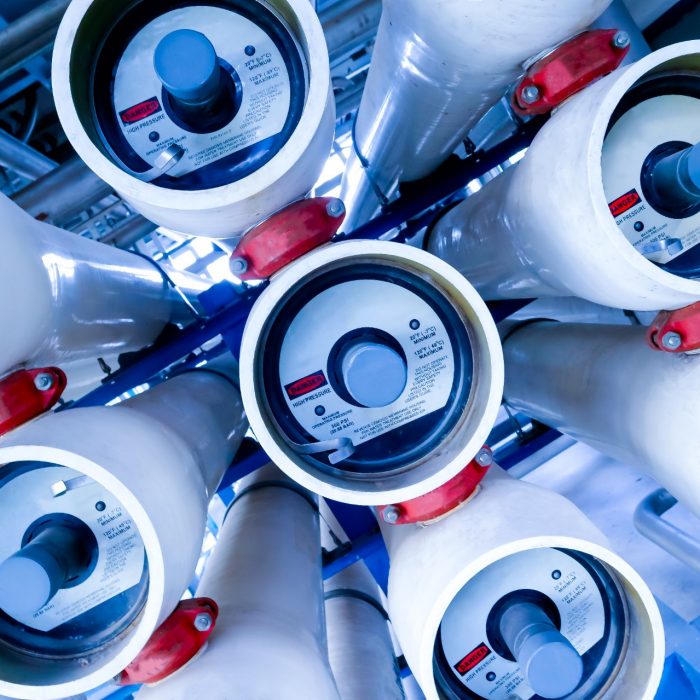Professor Tony Fane | Professor Greg Leslie
Membrane technology with a global legacy

For more than 50 years, membrane research at UNSW has informed and guided the engineering of membrane processes and preparation of novel membranes. From the optimisation of membrane bioreactors for wastewater treatment to developing a better understanding of membrane fouling in membrane desalination and water reclamation – these processes have changed the outcomes of water quality, treatment and sanitation in Australia and overseas.
Professor Vicki Chen in the UNSW Membrane Centre lab (1993). Professor Chen went on to be the Director of the UNESCO Centre for Membrane Science and Technology, Head of Chemical Engineering at UNSW and now currently the Provost at the University of Technology Sydney (UTS) in 2022.
From humble beginnings as a modest research-group to playing their part in the evolution of a multi-billion-dollar industry, the Chemical Engineering team at UNSW have focused their efforts on membrane technology to benefit both industry and community alike. “When our centre reached critical mass in the early 1990s, we were one of a handful of academic membrane research centres globally,” says Professor Tony Fane. “Unlike industry, our work was publicly available and aimed at generic problems that we could help solve.”
The Centre became well-known within their community for fundamental studies on membrane fouling. “This allowed us to help people understand how best to use their membranes”, adds Prof Fane.
Creating new industries
Perhaps one of the largest contributions made by the team has been their research in the early 1980s led by the late Professor Chris Fell and a visitor, Dr M Lefebvre, which led to the development and patent of an unconventional membrane filter made of nylon to treat wastewater. This membrane removed harmful molecules and pathogens and worked at low pressure – making it a cost-effective and affordable water treatment option.
This technology led to the creation of a spin-off company called Memtec Limited, which grew to an international company.
“If that membrane had not been developed at UNSW, Memtec probably would not have formed and one of the major membrane water treatment company's in the world would not exist. That UNSW membrane got them going.”
- Professor Tony Fane
While Memtec is now part of Du Pont Water and operates as Memcor (with headquarters in Windsor, NSW), the research conducted by the UNSW team also led to an ARC Special Research Centre and then formation of the UNESCO Centre for Membrane Science and Technology, which continues to operate today. The Centre has trained over 100 ‘membraneologists’ working in Australia and overseas.
“One of the many legacies of UNSW is not only the development of the underpinning technology but also the training of graduates and postgraduates that worked across the industry. Not only at Memcor – but also in the water utilities, consulting company's and contractors that have delivered these plants.”
(1) Making a Nylon membrane (1983). L to R. Prof. Tony Fane, Prof Hans Coster, Prof. Chris Fell. (2) Signing the UNESCO agreement in Paris on the 30th of October, 1992: Barry Jones, Australia Member of the Executive Board of UNESCO (left), and Federico Mayor, Director-General of UNESCO (right).
After wastewater is treated at the Orange County Sanitation District, it flows to the GWRS where it undergoes a state-of-the-art purification process consisting of microfiltration, reverse osmosis, and ultraviolet light with hydrogen peroxide. The product water is near-distilled-quality.
Meeting demand for potable water
Throughout the decades, the team’s research has also come to life via projects such as The Groundwater Replacement System (GWRS) project in Orange County California, which enabled and secured water supply for three million people.
As the world’s largest purification system for indirect potable use, the GWRS implements a modular water filtration system created by researchers at UNSW, which filters water at the location where it’s consumed – thereby removing obstacles such as distance and water transport for those who need it most.
The system takes highly treated wastewater that would have previously been discharged into the Pacific Ocean, and purifies it using an advanced treatment process based on membranes. The end result is high-quality water that meets all drinking water standards.
“The GWR System was possible because of pioneering work done in the early 1990s using Memtec (now Memcor) microfiltration membranes,” explains Prof. Leslie, a former student at the Centre who then worked at the GWRS.
- Professor Leslie
The success of the GWRS project not only drought-proofed the supply of water to the area but provided the global water industry with the confidence to use membrane technology for water recycling, which has since been replicated and applied across the US, Singapore, Australia and other parts of the world. “Engineers and water utilities would routinely visit Orange County to see the membranes in operation,” adds Prof. Leslie. The GWRS continues to use membranes that are created at Windsor, NSW.
As the centre’s research continues, the ultimate goal is to ensure water supply through membranes can become increasingly affordable and efficient in Australia and other parts of the world.
“If you can desalinate and re-use, and put the two together, you effectively drought proof yourself. The economics are allowing more and more people to do this.”
- Professor Tony Fane
Not only would this open a host of new opportunities for those in regional and remote Australia, it would help adaptation to climate change throughout the country. “As we get into water scarcity any incremental development in membrane technology can help.”
Sydney’s desalination plant is one of the largest in the world and opened in 2010.
Share this story
Water
Read more
Get in touch and see what’s possible.
Ask how we can help your business, industry, or market through collaboration.



